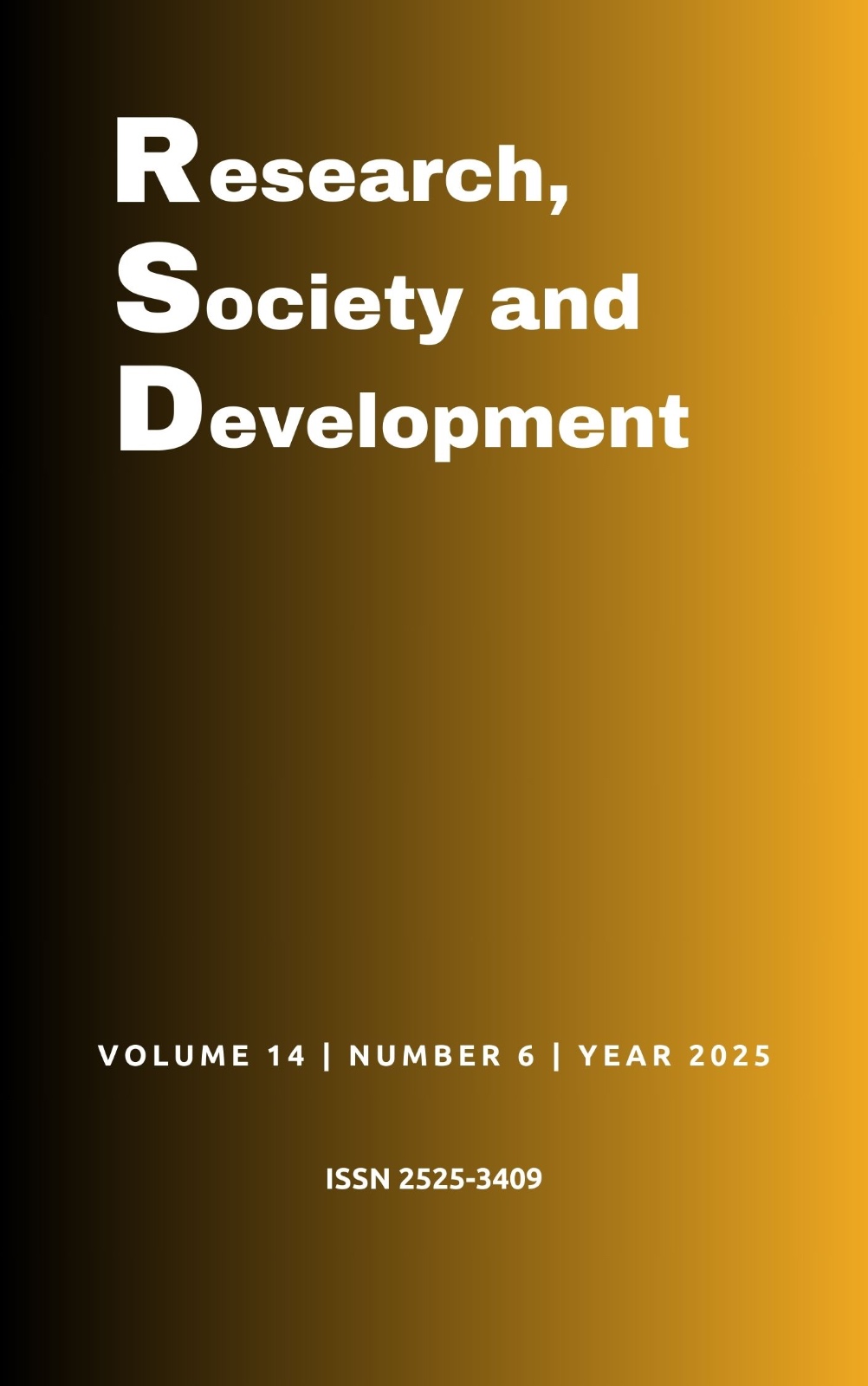In vitro production of bovine embryos: Literature review
DOI:
https://doi.org/10.33448/rsd-v14i6.49073Keywords:
Cattle, Assisted reproduction, Oocyte maturation, In vitro fertilization, IVEP, Embryo culture.Abstract
In vitro bovine embryo production (IVEP) is a biotechnological technique widely used to increase reproductive and genetic efficiency in cattle farming. The aim of this article is to review the existing literature on in vitro bovine embryo production. This article presents technical advances, challenges and perspectives in the field, based on recent studies from the last five years. Innovations in oocyte maturation, in vitro fertilization and embryo culture stand out, in addition to logistical and oocyte quality challenges. The results indicate that the integration of new technologies and the adaptation of protocols can expand the application of IVEP on a large scale. IVEP has played a crucial role in the advancement of cattle farming, allowing the production of high-quality embryos and promoting significant genetic gains. Despite the logistical and technical challenges, recent innovations offer promising solutions to expand its application, especially in remote regions.
Downloads
References
Carvalho, J. O., Ferreira, L. B. & Souza, R. F. (2018). Eficiência e limitações na produção in vitro de embriões bovinos. Revista de Reprodução Animal. 15, 45-51.
Casarin, S. T. et al. (2020). Tipos de revisão de literatura: considerações das editoras do Journal of Nursing and Health. Journal of Nursing and Health. 10(5). https://periodicos.ufpel.edu.br/index.php/enfermagem/article/view/19924.
Ferrareira, E. M., Virque, A. A., Adona, P. R. et al. (2019). Cytoplasmic maturation of bovine oocytes: Structural and biochemical modifications and impact on embryo development. Animal Reproduction. 16(2), 253-66. https://www.animal-reproduction.org.
Gardner, D. K. & Lane, M. (2007). The culture of mammalian preimplantation embryos under low oxygen: Implications for reproductive technology. Reproduction, Fertility and Development. 19(6), 787-94. https://www.publish.csiro.au.
Gasparini, T. G. & Barros, C. M. (2019). Produção in vitro de embriões bovinos: uma revisão histórica. Revista Científica Eletrônica de Medicina Veterinária. 28, 1-10.
Gilchrist, R. B., Lane, M. & Thompson, J. G. (2008). Oocyte-secreted factors: regulators of cumulus cell function and oocyte quality. Human Reproduction Update. 14(2), 159-77. https://academic.oup.com.
Hansen, P. J. (2014). Current and future assisted reproductive technologies for mammalian farm animals. Advances in Experimental Medicine and Biology. 1200, 1-22. https://link.springer.com.
Loiola, R. A. et al. (2015). Impacto do sêmen sexado na produção in vitro de embriões bovinos. Ciência Animal Brasileira. 16(4), 573-8.
Parrish, J. J., Susko-Parrish, J. L., Wiggins, C. A. & First, N. L. (1988). Capacitation of bovine sperm by heparin. Biology of Reproduction. 38(5), 1171-80. https://academic.oup.com.
Pereira A. S. et al. (2018). Metodologia da pesquisa científica. [free e-book]. Editora da UAB/NTE/UFSM.
Pontes, J. H. F., Melo-Stefani, C. V., Bariani, A. et al. (2011). Ovum pick-up, in vitro embryo production, and pregnancy rates from a large-scale commercial program using Nellore cattle (Bos indicus). Theriogenology. 75 (9), 1640-6. https://www.sciencedirect.com.
Quintão, D. P. (2023). Antioxidantes no cultivo in vitro de embriões bovinos. Arquivo Brasileiro de Medicina Veterinária. 74(2), 175-81. Rother, E. T. (2007). Revisão sistemática x revisão narrativa. Acta Paul. Enferm. 20 (2). https://doi.org/10.1590/S0103-21002007000200001.
Silva Jr., R. et al. (2021). Uso de nanopartículas de resveratrol na maturação in vitro de oócitos bovinos. Revista Brasileira de Reprodução Animal. 45, 89-95.
Silva, A. L. (2024). Efeitos de diferentes concentrações de melatonina na maturação oocitária e/ou cultivo embrionário sobre as taxas de produção de embriões bovinos cultivados in vitro. Trabalho de Conclusão de Curso (Bacharelado em Zootecnia) – Universidade Estadual Paulista, Faculdade de Ciências Agrárias e Tecnológicas, Dracena. https://repositorio.unesp.br/handle/11449/260124.
Snyder, H. (2019). Literature review as a research methodology: An overview and guidelines. Journal of business research, 104, 333-339.
Silva, F. R. et al. (2020). Transporte de oócitos e maturação in vitro: soluções para a logística da PIVE. Pesquisa Agropecuária Brasileira. 55(6), 87-93.
Vajta, G. & Kuwayama, M. (2006). Improving cryopreservation systems. Theriogenology. 65(1), 236-44. https://www.sciencedirect.com.
Van Wagenen, G. & Rakin, B. (2019). Reproductive biology of domestic animals. (2ed). Editora Elsevier.
Vieira, L. M., Pereira, M. M. & Melo, D. S. (2021). Aplicações da fertilização in vitro na pecuária brasileira. Acta Scientiarum Animal Sciences. 43, 1-9.
Downloads
Published
Issue
Section
License
Copyright (c) 2025 Kézia Coelho Maciel; Jaqueline Assini Masquio; Mayra Meneguelli Teixeira

This work is licensed under a Creative Commons Attribution 4.0 International License.
Authors who publish with this journal agree to the following terms:
1) Authors retain copyright and grant the journal right of first publication with the work simultaneously licensed under a Creative Commons Attribution License that allows others to share the work with an acknowledgement of the work's authorship and initial publication in this journal.
2) Authors are able to enter into separate, additional contractual arrangements for the non-exclusive distribution of the journal's published version of the work (e.g., post it to an institutional repository or publish it in a book), with an acknowledgement of its initial publication in this journal.
3) Authors are permitted and encouraged to post their work online (e.g., in institutional repositories or on their website) prior to and during the submission process, as it can lead to productive exchanges, as well as earlier and greater citation of published work.


